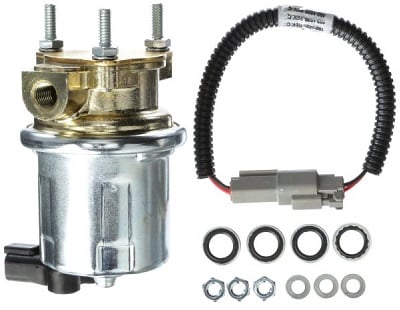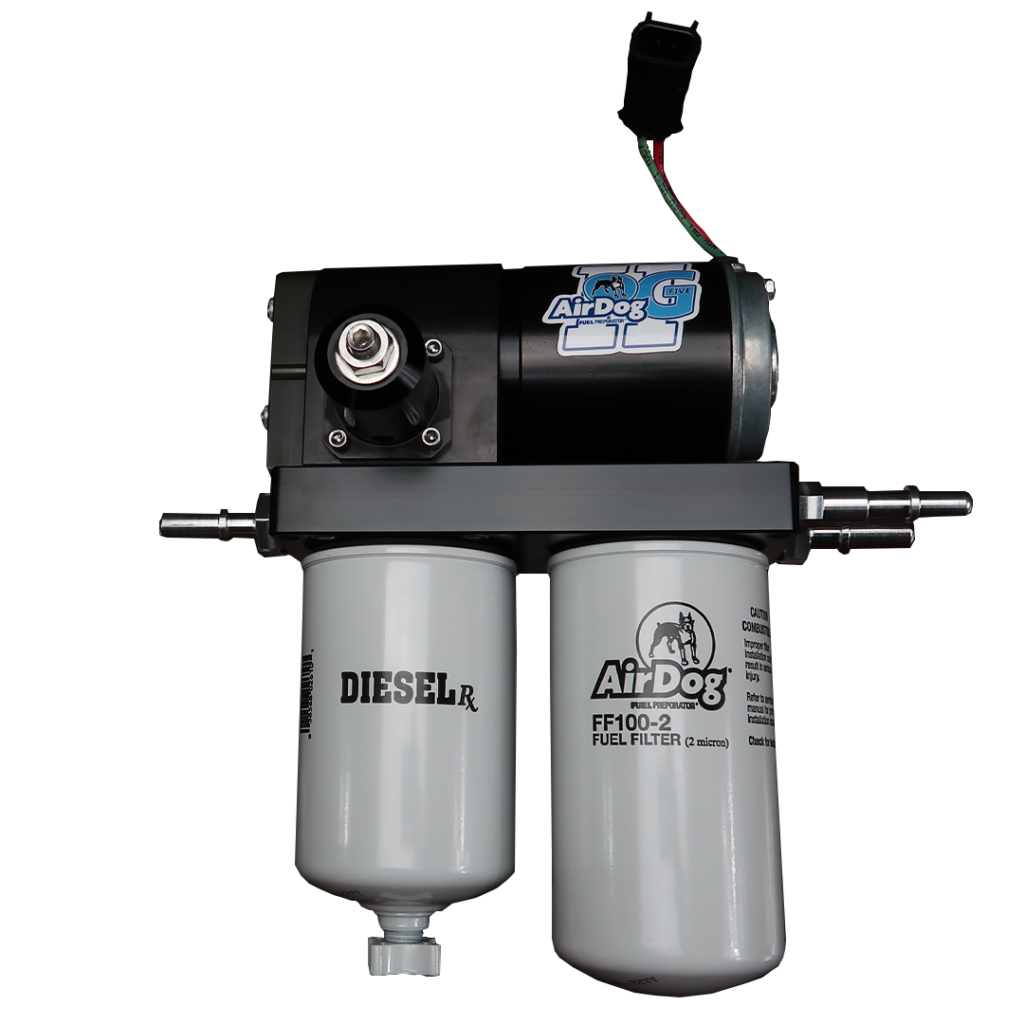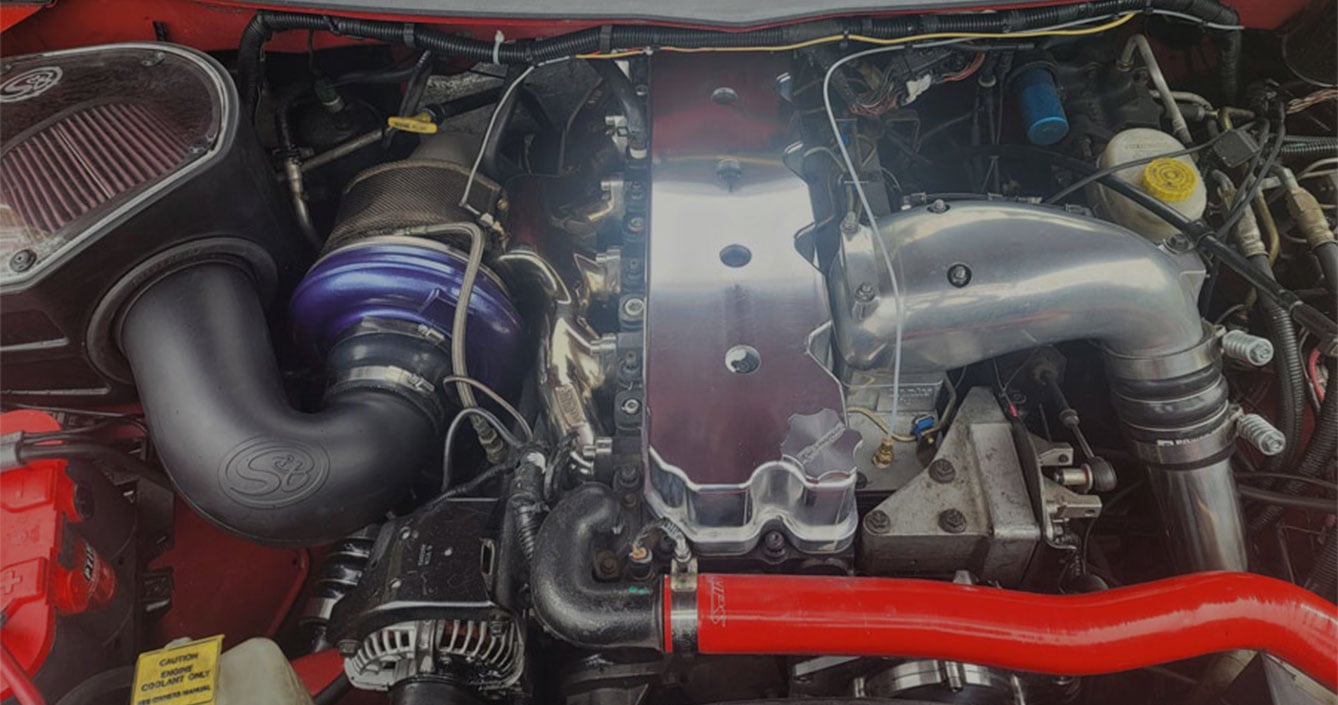The 1998.5-2002 Dodge Ram 24 Valve Cummins is a relatively simple diesel engine. This engine features “pop” style injectors that are actuated by fuel pressure generated by the VP44 injection pump. The only electric portion of the fuel system is the “PSG” located on the top of the VP44 pump.
In order to diagnose a no start condition on this generation of truck, you’ll want to use an OBD-II scanner to scan the truck for codes. If you don’t have access to a scanner, you can also do the key cycle trick where you insert the key into the ignition and cycle it to the furthermost forward position and back three times, leaving it in the forward position on the third cycle. Any present codes stored in the ECM will display where your odometer and trip meter are. If you have done any research on this particular Cummins platform, you will find all sorts of posts pointing a finger at the VP44 injection pump. Although the VP44 is the most common failure point, you also want to make sure the parts around the pump are functioning properly. I have seen many times where an individual will replace an injection pump because they found a P0216 fault code (known as the VP44 “Death Code”) without checking lift pump pressure and/or volume. The individual then installs a new VP44 pump, and then almost immediately, the new VP44 dies. So, if you find a P0216 code, or a P0230, you want to start by ensuring the low pressure lift pump is delivering adequate fuel supply.

For checking the pump/tank pickup, first you must verify what type of pump you have. All the 1998.5-2002 24 Valve Cummins trucks came factory with a block mounted fuel pump that is secured via a bracket with 3 nuts that sits behind the fuel filter canister.
However, in some trucks, the dealer has updated the truck to have an in-tank pump, like the pumps found in the 2005+ Cummins trucks. The way to find out is to look behind the fuel filter canister under the hood. If your truck has been retrofitted with an in-tank pump, there will be a pass-through style block that will be mounted in that location. It will only be the block; it will not have the pump body below it. Also, there will be no electrical two wire connector attached to the block. If you have the factory style pump, you should first verify you have fuel flow. You do this by removing the fuel feed line off the inlet to the injection pump and place that into a bucket that you can measure volume from. After this line has been removed and placed in a bucket, you will want to “bump” the key to allow the fuel pump to cycle and attempt to pull fuel from the tank. You want to see at least 56 ounces of bubble free fuel. “Bubble free” is extremely important, as cavitation is one of the main causes of VP44 failure. If volume is low but bubble free, it can still cause cavitation in the injection pump because the VP44 is having to pull the fuel creating a vacuum that can cause cavitation. If you are not getting any fuel at all, but you know the pump is operating, you would want to check the fuel filter itself to ensure that you do not have any blockage. If that checks out, you will want to perform what’s called a bucket test. This consists of removing the line that attaches to the top of the tank and placing that in a bucket of clean diesel fuel. This will remove the pickup assembly from the equation in case you have a damaged fuel pickup internally in the tank. This test can only be performed if you have a factory style pump mounted on the block. For individuals with an in-tank pump, you would have to drop the tank or lift the bed to gain access to the fuel pickup assembly to visually inspect it. At this point, if you do not have adequate fuel volume to the injection pump, we would recommend replacing the lift pump with an aftermarket pump assembly, such as a FASS Titanium Signature Series or an Airdog Fuel System. We have multiple options available for nearly any budget, which can be found HERE.

Now that the lift pump has been diagnosed, its time to move up to the injection pump. The VP44 has a few codes that are basically just associated with failure. Typically with any engine a single code will not necessarily mean that the part its pointing to is bad….. with the VP44 though, throw that out. Now you might be thinking, why did I spend all this time checking a lift pump when it’s the injection pump that is bad? Well, the number one cause of VP44 failure is the lift pump itself. Replacing the VP44 without checking the lift pump will lead to many tears and an empty wallet as you will be replacing VP44’s repeatedly if the lift pump is not functioning properly. So back to the codes, the DEATH codes of the VP44 are P0216 (Fuel Injection Timing Failure), P0251 (Fuel Injection Pump Mechanical Failure), P0253 (Fuel injection Pump Fuel Valve Open), P0370 (Fuel Injection Pump Speed Signal Lost), P1688 (Internal Fuel Injection Pump Failure), and P1691 (Fuel Injection Pump Controller Calibration Error). All of these can be an indication of the VP44 failing, however, some of these codes can be something as simple as a relay. If you have code P0253 or P0215, a simple test you can do is swapping the fuel pump relay with the horn relay and attempt to start the engine. Also, with code P0253, this can be due to an aftermarket tuner that is installed on the truck. Some tuners for this platform will require you to do what’s called a pump wire-tap. You will literally tap a wire that comes from the electronic module on the pump to the pump itself to control timing and other parameters of the injection pump for added power. These can corrode, come loose, break, or there can be an issue with the actual performance box that is requiring the wire to be tapped. If you have something like this installed and you are getting a P0253, or a P0602 code, remove the performance box and attempt to start the truck. If the truck runs, you know you have an issue with the performance box and not the pump itself. If you are going to install or have this type of performance box, we would highly suggest investing in a BD Stealth Cover. The Stealth Cover from BD eliminates the need to “tap” your external pump wire and will replace the top cover of your pump with one that will have a much better and safer connection to your injection pump for performance modules.

There is one other code that can come up that is associated with the injection pump, but typically means another sensor, code P1690. This code usually comes up along with code P0336. This can be attributed to a bad crank sensor that can cause stalls, hard start, no start, misfires, and surging.
Now, if all this checks out and you have no codes but still a no start or hard start condition, you will want to start looking at the injectors. The first obvious thing would be a leak. Check and make sure you have leak free seals on all the injector lines from the pump and to the injectors. You’ll next need to check the connector tubes, which are located between the injector line and the injector itself. You would want to make sure the hold down nuts are tight and leak free. If no leaks are detected, then you may want to have the injectors tested. The injectors in this engine are basic: fuel pressure overcomes spring pressure and they fire (open), requiring no electronics. Factory pop pressure should be between 280-310bar. Unless you have a pop pressure testing device, the only way to test this is to take them out and send to a fuel injection shop that has the capability to test them. The higher the mileage on your truck, the weaker this type of injector can get. Injectors that are out of spec can also cause poor fuel economy and an overall loss in power. We have many injector options available that can be found HERE.
Keep in mind these are essentially the basics of checking these trucks for a no start or hard start condition due to fuel delivery. Could there be something more in-depth that is happening? Yes, however, what’s in this write up are the common things that you can check at home with very basic tools. For issues that are deeper than this, it is suggested that you get with a technician that knows their way around these engines for further diagnosis, or give us a call or send an e-mail and we’ll help to point you in the right direction.


2001 Dodge 3500 w/cummins 24 valve. Truck started shaking in front end violently (probably due to wheel weight loss or something?) then truck immediately died. Pin #7 has power in the on position but looses power when cranking. I started the truck by jump wires to pin#7 and pin #6, respectively. Runs good in driveway but won’t run when wire harness is plugged into the injector pump. NO POWER DURING CRANKING
Having the same problem
I have a 2001 Dodge comings. 59 Turbo diesel last year, my.
Bump pum went bad and I replaced it with a fast. Every since I’ve replaced it with the fast. It starts up great in the morning. I drive it for 30 minutes, whatever shut it off. Come back 30 minutes later and it won’t start. But I think the reason is with the Fast pump. I’m getting about 22PSI and what is doing? Is it not letting that feel? At that point, go Into the VP44.into the PV44. Can you help me with this?